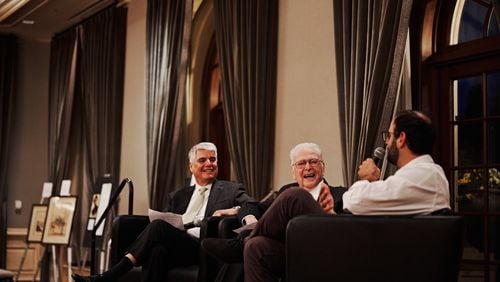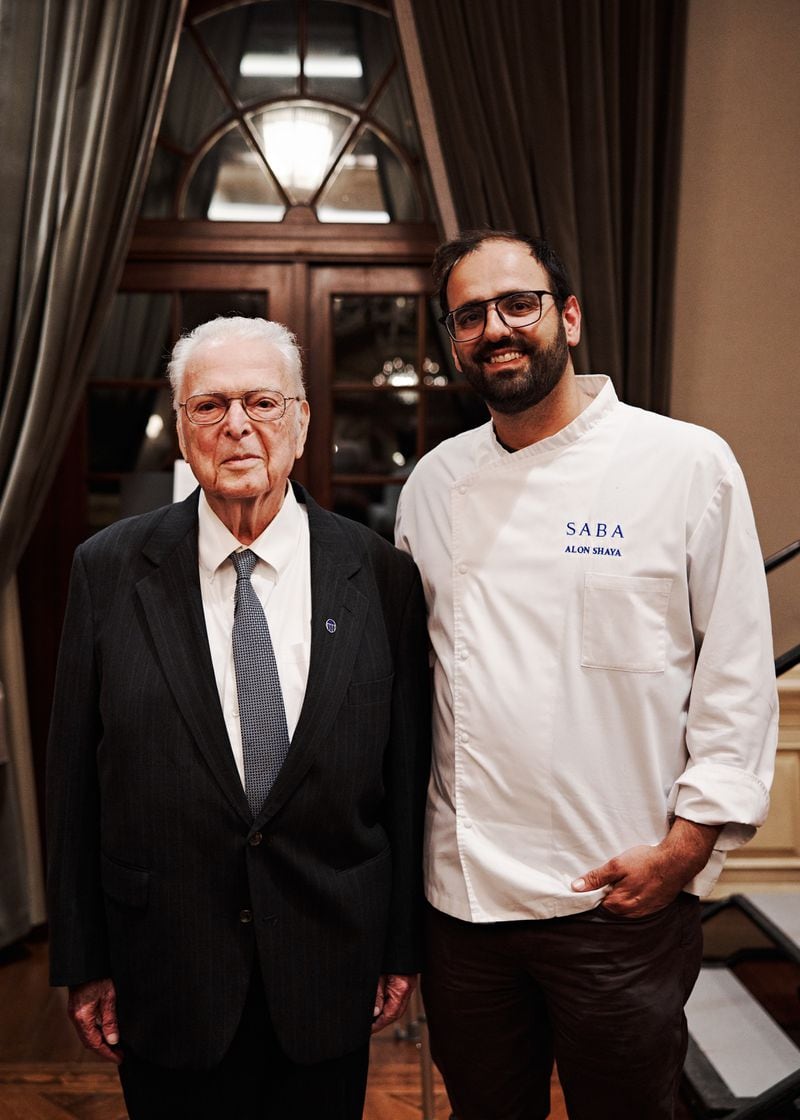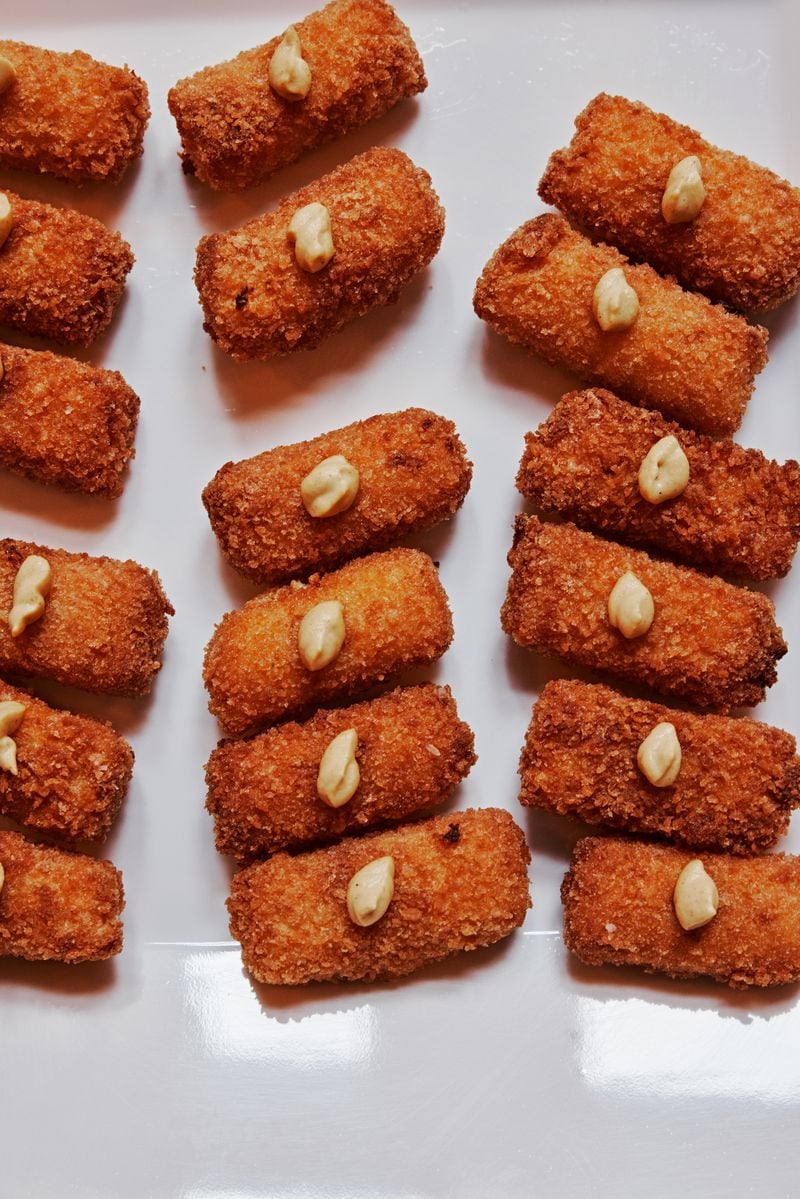When Steven Fenves and his family were forced from their home in Subotica, Yugoslavia, they, like many other Jews during the Holocaust, had to abandon their belongings. As they were escorted out of their home, looters lined up, hoping to nab silver and other valuables, shouting and spitting on the family as they passed.
Steven, then 12, and his family didn’t know it, but in that crowd was Maris, the family’s non-Jewish cook. Maris wasn’t there to loot, but instead grabbed items significant to the family, including nearly 200 drawings by Steven’s mother, Klara, plus a diary and the family cookbook. At personal risk, she hid them during World War II, and when Steven and his sister, Eszti, survived the Auschwitz-Birkenau concentration camp, she returned the artifacts to them. Klara did not survive. (Their father, Lagos, survived the war, but died a few months after.)
Credit: Courtesy of Andrew Thomas Lee for U.S. Holocaust Memorial Museum.
Credit: Courtesy of Andrew Thomas Lee for U.S. Holocaust Memorial Museum.
After reuniting, Steven and Eszti fled communist Yugoslavia, and Maris again took the family heirlooms for safekeeping. Eventually, she mailed them to the siblings who had emigrated to the United States.
Steven and Eszti cherished their mother’s artwork more than the recipes. Some recipes lacked cooking temperatures and other details, and Steven wasn’t particularly interested in cooking from them. So, the tastes of Steven’s youth were lost, another thing seemingly stolen by the Nazi regime. The siblings donated the cookbook to the U.S. Holocaust Memorial Museum. The Washington, D.C., museum displays such artifacts to provide a picture of Jewish life before World War II.
Thanks to an unusual friendship, on March 21, 100 attendees at the Arthur M. Blank Family Foundation in Buckhead tasted some recipes at a Food and Family Ties: Honor Holocaust Memory Through Rescued Recipes dinner. The $1,000-per-person event was a fundraiser for the Museum’s Rubenstein National Institute for Holocaust Documentation, which is responsible for preserving Holocaust artifacts, such as the Fenves family recipe book.
In 2018, James Beard Award-winning Chef Alon Shaya learned about the Fenves family relic at the Holocaust Museum. Since visiting Yad Vashem in Jerusalem, Shaya had been thinking about Holocaust survivors who wrote recipes from memory on scraps of cloth while in concentration camps and the ways that memories of food sustained people. When Shaya learned that Steven was a frequent volunteer with the museum in D.C., he realized it was an opportunity to work one-on-one with someone with a connection to those recipes.
Credit: Courtesy of Andrew Thomas Lee for U.S. Holocaust Memorial Museum.
Credit: Courtesy of Andrew Thomas Lee for U.S. Holocaust Memorial Museum.
Shaya asked Steven to translate the handwritten recipes. (Subotica was on the Hungarian/Yugoslavia border, where Steven says, “even the dogs barked in two languages.” The Fenves family spoke Hungarian and German at home.) He agreed, and worked off a high-resolution copy, as the original, with its embossed cover, is fragile.
Then, the coronavirus pandemic happened, and the project moved to videoconferencing. In New Orleans, Shaya cooked and sent Fenves dishes, packed in dry ice, that they would discuss over Zoom. Steven gave the chef feedback, and Shaya refined. Steven told Shaya that his favorite dish (both then and now) was semolina sticks that looked like fish sticks. Shaya concocted a Cream of Wheat-type paste and shaped them. Guests at the dinner happily took seconds and thirds of the snack, which was crispy on the outside and gooey on the inside and included an artful dollop of mustard.
Credit: Courtesy of Andrew Thomas Lee for U.S. Holocaust Memorial Museum.
Credit: Courtesy of Andrew Thomas Lee for U.S. Holocaust Memorial Museum.
In addition to the semolina sticks, guests ate potato circles with mushrooms and thyme, a recipe that uses mashed potatoes in a dough. This dish, which Steven remembers as something served when the adults entertained, was also one that Atlanta guests returned to for second helpings. Other dishes included: mushroom paprikash with sour cream; duck liver pate with rye crackers and fig jam; and small dates stuffed with radishes, saffron and scallions. The dessert station was stacked with walnut cream cake, poppy seed pinwheel and apple tart. The evening’s program included copies of a few recipes for folks to try at home.
The Atlanta dinner is one of eight Rescued Recipe dinners the museum is hosting across the country. So far the initiative has raised about $300,000 of its $1 million goal.
Steven’s son, Gregory L. Fenves, is the president of Emory University (and the first Jewish president of the school). This gave the Atlanta event some elements not available at the other dinners. Steven is not traveling to all of the dinners, but was able to be on stage in Atlanta, in a discussion moderated by Gregory. Because some of Klara’s art hangs in Lullwater House, it was available to display to guests, who got to see up-close what Maris hid all those years.
“This is an absolutely fascinating story. The story of survival. It is a story of a righteous Gentile. Maris risked her life just to keep a recipe book and 200 pieces of art, and that she was able to find the family after the war,” says Jed Silberg, the museum’s national philanthropy officer. “It’s incumbent upon us at the museum to preserve and tell the story. We do it for Steven. We do it for every survivor, and it’s important for the future, so that Steven’s past isn’t anyone else’s future.”
For as often as Steven and Shaya have worked together, they discover new things each time they share with others. On the stage with his son and Shaya, Steven recounted how his desire to educate about the Holocaust has ebbed and flowed over the years. He wasn’t actively sharing when Shaya reached out.
“It was a period of painful dormancy. I stopped using my voice,” Steven says to Shaya. “So, I owe you for getting me back to my own story.”
“I had not heard that before. And it makes me feel important. It makes me feel like it was the right thing to do,” Shaya says. “We’re doing more than just cooking food. We’re giving each other purpose.”
About the Author









